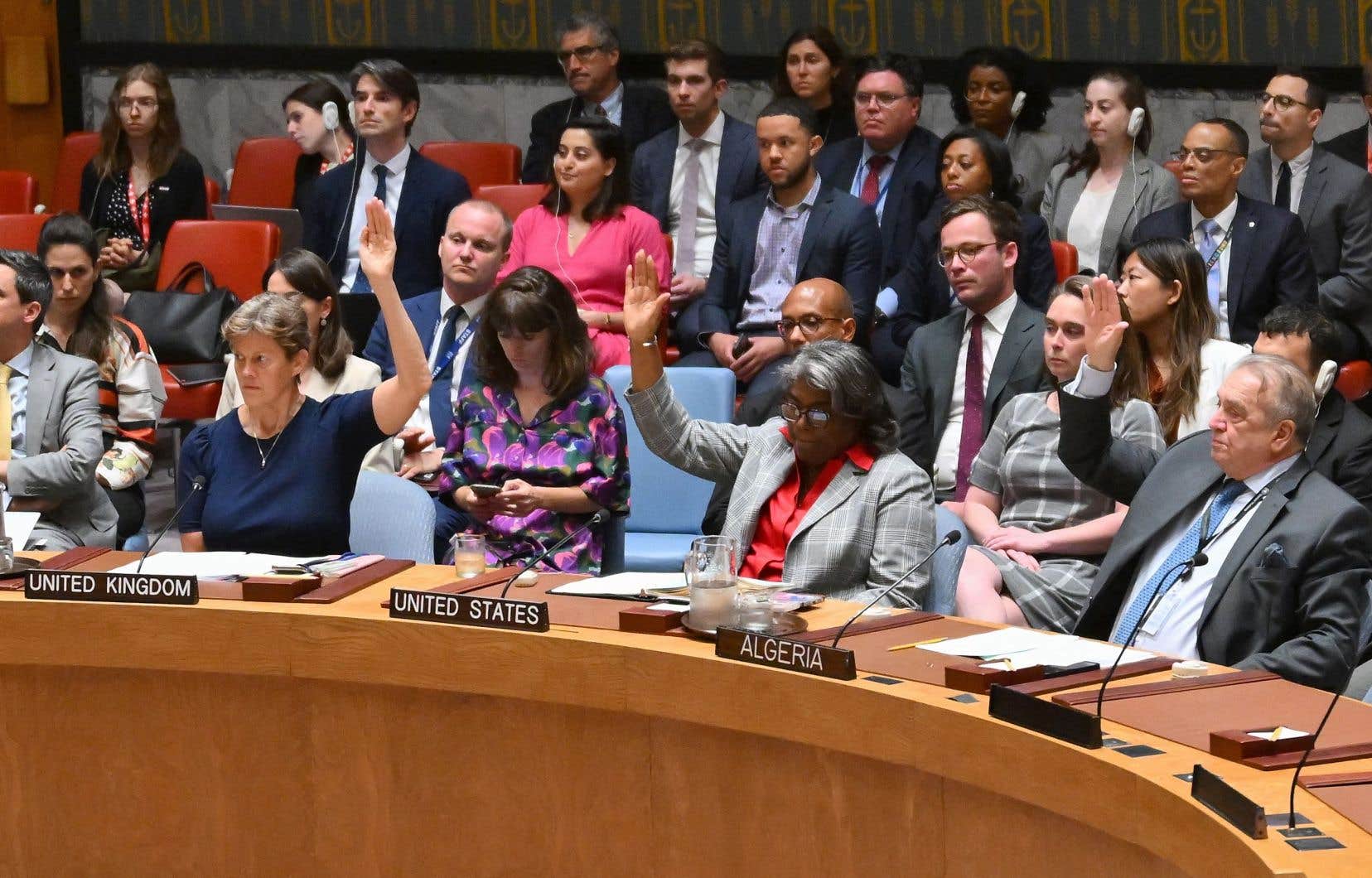The UN Security Council on Monday adopted a draft American resolution supporting the ceasefire plan in Gaza, at a time when Washington is leading an intense diplomatic campaign to push Hamas to accept this proposal in three phases.
The text, which “welcomes” the truce proposal announced on May 31 by American President Joe Biden, received 14 votes in favor, with Russia abstaining.
The resolution, affirming that Israel has “accepted” this plan, urges Hamas “to also accept it and calls on both parties to fully implement its terms without delay and without conditions.”
After more than eight months of war, the plan provides, in a first phase, a six-week ceasefire accompanied by an Israeli withdrawal from densely populated areas of Gaza, the release of certain hostages kidnapped during the attack on Hamas and Palestinian prisoners held by Israel.
“Today we voted for peace,” commented the American ambassador to the UN, Linda Thomas-Greenfield.
“This Council has sent a clear message to Hamas: accept the ceasefire agreement on the table. Israel has already accepted it and the fighting could stop today if Hamas did the same,” she said.
Widely criticized for having blocked several draft resolutions calling for a ceasefire in Gaza, the United States, Israel’s ally, has continued to justify itself in recent months, ensuring that a truce cannot come. than an agreement on the ground.
They thus repeated at the end of May that an Algerian draft resolution – since shelved – demanding an immediate ceasefire and an end to the Israeli offensive in Rafah “would not help”.
A sign of the all-out American diplomatic campaign, American Secretary of State Antony Blinken returned to the Middle East on Monday to promote the ceasefire plan.
Reserves
While Hamas has still not officially reacted to this proposal, the United States clearly places the primary responsibility for accepting it on the Palestinian Islamist movement.
But if Joe Biden described the plan as coming from Israel, Prime Minister Benjamin Netanyahu said he wanted to continue the war until the destruction of Hamas and political divisions in his country could complicate American diplomatic efforts.
The war was sparked by Hamas’ unprecedented attack on Israel on October 7, killing 1,194 people, mostly civilians, according to an AFP count based on official Israeli data.
The Israeli retaliatory offensive has left at least 37,124 dead in the Gaza Strip, according to the Hamas health ministry.
Most members of the Security Council had from the start supported the principle of a resolution supporting the ceasefire plan, but several of them had been very reserved on the wording of previous versions of the American text. , in particular Algeria, which represents the Arab group, and Russia, which has a veto.
Responding to requests made by certain members, the latest text specifies certain elements of the plan.
It indicates in particular that if the first phase takes more than six weeks, the ceasefire will be maintained “as long as negotiations continue”.
The resolution also opposes “any attempt to modify the demographic or territorial nature of the Gaza Strip, including any action that would reduce” its territory and reiterates its support for the two-state solution.
Since October 7, the Security Council has struggled to speak with one voice. Many draft resolutions were rejected, either for lack of votes or due to American vetoes on one side and Russian and Chinese vetoes on the other.
After two resolutions mainly focused on humanitarian aid, the Council finally demanded an “immediate ceasefire” at the end of March for the duration of Ramadan; a call previously blocked several times by the United States, which this time abstained.
